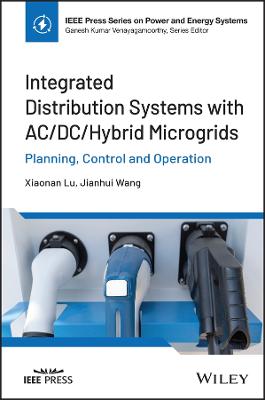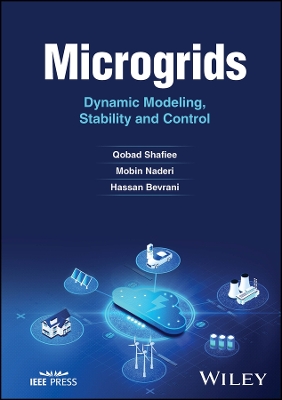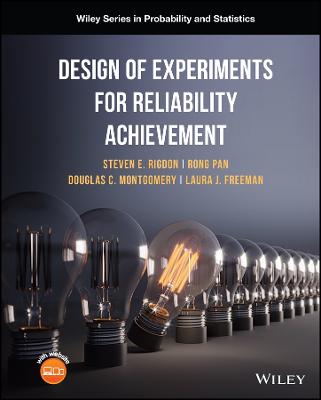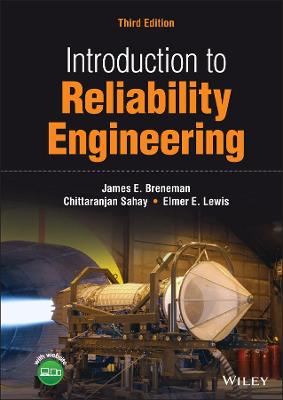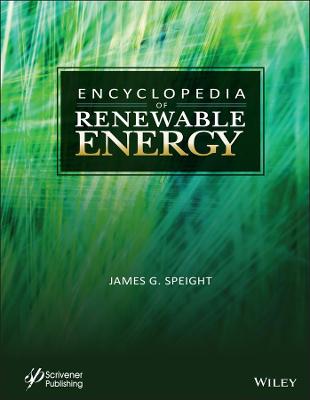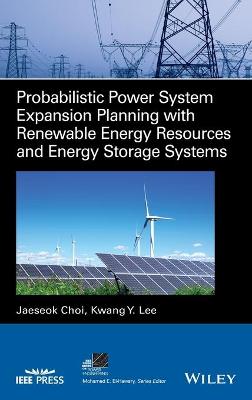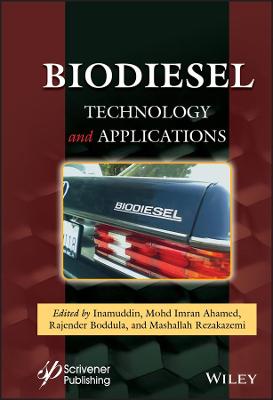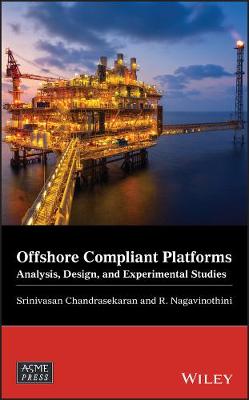Design of Foundations for Offshore Wind Turbines
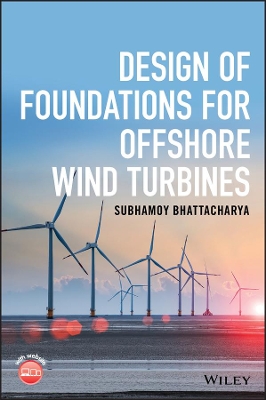 -15%
portes grátis
-15%
portes grátis
Design of Foundations for Offshore Wind Turbines
Bhattacharya, Subhamoy
John Wiley & Sons Inc
04/2019
392
Dura
Inglês
9781119128120
15 a 20 dias
744
About the Companion Website xv
1 Overview of a Wind Farm and Wind Turbine Structure 1
1.1 Harvesting Wind Energy 1
1.2 Current Scenario 2
1.2.1 Case Study: Fukushima Nuclear Plant and Near-Shore Wind Farms during the 2011 Tohoku Earthquake 5
1.2.2 Why Did the Wind Farms Survive? 6
1.3 Components of Wind Turbine Installation 8
1.3.1 Betz Law: A Note on Cp 11
1.4 Control Actions of Wind Turbine and Other Details 11
1.4.1 Power Curves for a Turbine 14
1.4.2 What Are the Requirements of a Foundation Engineer from the Turbine Specification? 15
1.4.3 Classification of Turbines 15
1.5 Foundation Types 16
1.5.1 Gravity-Based Foundation System 18
1.5.1.1 Suction Caissons or Suction Buckets 19
1.5.1.2 Case Study: Use of Bucket Foundation in the Qidong Sea (Jiangsu Province, China) 22
1.5.1.3 Dogger Bank Met Mast Supported on Suction Caisson 22
1.5.2 Pile Foundations 22
1.5.3 Seabed Frame or Jacket Supported on Pile or Caissons 23
1.5.4 Floating Turbine System 25
1.6 Foundations in the Future 27
1.6.1 Scaled Model Tests 33
1.6.2 Case Study of a Model Tests for Initial TRL Level (3-4) 34
1.7 On the Choice of Foundations for a Site 35
1.8 General Arrangement of a Wind Farm 36
1.8.1 Site Layout, Spacing of Turbines, and Geology of the Site 37
1.8.2 Economy of Scales for Foundation 40
1.9 General Consideration for Site Selection 42
1.10 Development of Wind Farms and the Input Required for Designing Foundations 44
1.11 Rochdale Envelope Approach to Foundation Design (United Kingdom Approach) 46
1.12 Offshore Oil and Gas Fixed Platform and Offshore Wind Turbine Structure 48
1.13 Chapter Summary and Learning Points 50
2 Loads on the Foundations 51
2.1 Dynamic Sensitivity of Offshore Wind Turbine Structures 51
2.2 Target Natural Frequency of a Wind Turbine Structure 53
2.3 Construction of Wind Spectrum 58
2.3.1 Kaimal Spectrum 60
2.4 Construction of Wave Spectrum 61
2.4.1 Method to Estimate Fetch 63
2.4.2 Sea Characteristics for Walney Site 63
2.4.3 Walney 1Wind Farm Example 63
2.5 Load Transfer from Superstructure to the Foundation 64
2.6 Estimation of Loads on a Monopile-Supported Wind Turbine Structure 66
2.6.1 Load Cases for Foundation Design 67
2.6.2 Wind Load 70
2.6.2.1 Comparisons with Measured Data 72
2.6.2.2 Spectral Density of Mudline Bending Moment 76
2.6.3 Wave Load 76
2.6.4 1P Loading 79
2.6.5 Blade Passage Loads (2P/3P) 80
2.6.6 Vertical (Deadweight) Load 81
2.7 Order of Magnitude Calculations of Loads 81
2.7.1 Application of Estimations of 1P Loading 82
2.7.2 Calculation for 3P Loading 82
2.7.3 Typical Moment on a Monopile Foundation for Different-Rated Power Turbines 84
2.8 Target Natural Frequency for Heavier and Higher-Rated Turbines 85
2.9 Current Loads 86
2.10 Other Loads 87
2.11 Earthquake Loads 87
2.11.1 Seismic Hazard Analysis (SHA) 90
2.11.2 Criteria for Selection of Earthquake Records 91
2.11.2.1 Method 1: Direct Use of Strong Motion Record 91
2.11.2.2 Method 2: Scaling of Strong Motion Record to Expected Peak Bedrock Acceleration 91
2.11.2.3 Method 3: Intelligent Scaling or Code Specified Spectrum Compatible Motion 91
2.11.3 Site Response Analysis (SRA) 93
2.11.4 Liquefaction 94
2.11.5 Analysis of the Foundation 95
2.12 Chapter Summary and Learning Points 101
3 Considerations for Foundation Design and the Necessary Calculations 103
3.1 Introduction 103
3.2 Modes of Vibrations of Wind Turbine Structures 104
3.2.1 Sway-Bending Modes of Vibration 105
3.2.1.1 Example Numerical Application of Modes of Vibration of Jacket Systems 106
3.2.1.2 Estimation of Natural Frequency of Monopile-Supported Strctures 106
3.2.2 Rocking Modes of Vibration 109
3.2.3 Comparison of Modes of Vibration of Monopile/Mono-Caisson and Multiple Modes of Vibration 115
3.2.4 Why Rocking Must Be Avoided 116
3.3 Effect of Resonance: A Study of an Equivalent Problem 117
3.3.1 Observed Resonance in German North Sea Wind Turbines 119
3.3.2 Damping of Structural Vibrations of Offshore Wind Turbines 119
3.4 Allowable Rotation and Deflection of a Wind Turbine Structure 120
3.4.1 Current Limits on the Rotation at Mudline Level 120
3.5 Internationals Standards and Codes of Practices 122
3.6 Definition of Limit States 124
3.6.1 Ultimate Limit State (ULS) 124
3.6.2 Serviceability Limit State (SLS) 125
3.6.3 Fatigue Limit State (FLS) 126
3.6.4 Accidental Limit States (ALS) 126
3.7 Other Design Considerations Affecting the Limit States 126
3.7.1 Scour 127
3.7.2 Corrosion 129
3.7.3 Marine Growth 129
3.8 Grouted Connection Considerations for Monopile Type Foundations 129
3.9 Design Consideration for Jacket-Supported Foundations 130
3.10 Design Considerations for Floating Turbines 131
3.11 Seismic Design 132
3.12 Installation, Decommission, and Robustness 132
3.12.1 Installation of Foundations 132
3.12.1.1 Pile Drivability Analysis 133
3.12.1.2 Predicting the Increase in Soil Resistance at the Time of Driving (SRD) Due to Delays (Contingency Planning) 134
3.12.1.3 Buckling Considerations in Pile Design 134
3.12.2 Installation of Suction Caissons 138
3.12.2.1 First Stage 138
3.12.2.2 Second Stage 138
3.12.3 Assembly of Blades 138
3.12.4 Decommissioning 139
3.13 Chapter Summary and Learning Points 141
3.13.1 Monopiles 142
3.13.2 Jacket on Flexible Piles 146
3.13.3 Jackets on Suction Caissons 146
4 Geotechnical Site Investigation and Soil Behaviour under Cyclic Loading 147
4.1 Introduction 147
4.2 Hazards that Needs Identification Through Site Investigation 148
4.2.1 Integrated Ground Models 148
4.2.2 Site Information Necessary for Foundation Design 149
4.2.3 Definition of Optimised Site Characterisation 151
4.3 Examples of Offshore Ground Profiles 151
4.3.1 Offshore Ground Profile from North Sea 151
4.3.2 Ground Profiles from Chinese Development 152
4.4 Overview of Ground Investigation 157
4.4.1 Geological Study 157
4.4.2 Geophysical Survey 157
4.4.3 Geotechnical Survey 158
4.5 Cone Penetration Test (CPT) 160
4.6 Minimum Site Investigation for Foundation Design 164
4.7 Laboratory Testing 164
4.7.1 Standard/Routine Laboratory Testing 165
4.7.2 Advanced Soil Testing for Offshore Wind Turbine Applications 165
4.7.2.1 Cyclic Triaxial Test 166
4.7.2.2 Cyclic Simple Shear Apparatus 170
4.7.2.3 Resonant Column Tests 172
4.7.2.4 Test on Intermediate Soils 174
4.8 Behaviour of Soils under Cyclic Loads and Advanced Soil Testing 174
4.8.1 Classification of Soil Dynamics Problems 175
4.8.2 Important Characteristics of Soil Behaviour 177
4.9 Typical Soil Properties for Preliminary Design 179
4.9.1 Stiffness of Soil from Laboratory Tests 179
4.9.2 Practical Guidance for Cyclic Design for Clayey Soil 181
4.9.3 Application to Offshore Wind Turbine Foundations 183
4.10 Case Study: Extreme Wind and Wave Loading Condition in Chinese Waters 184
4.10.1 Typhoon-Related Damage in the Zhejiang Province 186
4.10.2 Wave Conditions 187
5 Soil-Structure Interaction (SSI) 191
5.1 Soil-Structure Interaction (SSI) for Offshore Wind Turbines 192
5.1.1 Discussion on Wind-Wave Misalignment and the Importance of Load Directionality 193
5.2 Field Observations of SSI and Lessons from Small-Scale Laboratory Tests 195
5.2.1 Change in Natural Frequency of the Whole System 195
5.2.2 Modes of Vibration with Two Closely Spaced Natural Frequencies 195
5.2.3 Variation of Natural Frequency with Wind Speed 196
5.2.4 Observed Resonance 197
5.3 Ultimate Limit State (ULS) Calculation Methods 197
5.3.1 ULS Calculations for Shallow Foundations for Fixed Structures 197
5.3.1.1 Converting (V, M, H) Loading into (V, H) Loading Through Effective Area Approach 200
5.3.1.2 Yield Surface Approach for Bearing Capacity 200
5.3.1.3 Hyper Plasticity Models 201
5.3.2 ULS Calculations for Suction Caisson Foundation 201
5.3.2.1 Vertical Capacity of Suction Caisson Foundations 202
5.3.2.2 Tensile Capacity of Suction Caissons 203
5.3.2.3 Horizontal Capacity of Suction Caissons 203
5.3.2.4 Moment Capacity of Suction Caissons 204
5.3.2.5 Centre of Rotation 206
5.3.2.6 Caisson Wall Thickness 207
5.3.3 ULS Calculations for Pile Design 207
5.3.3.1 Axial Pile Capacity (Geotechnical) 208
5.3.3.2 Axial Capacity of the Pile (Structural) 211
5.3.3.3 Structural Sections of the Pile 212
5.3.3.4 Lateral Pile Capacity 214
5.4 Methods of Analysis for SLS, Natural Frequency Estimate, and FLS 216
5.4.1 Simplified Method of Analysis 216
5.4.2 Methodology for Fatigue Life Estimation 223
5.4.3 Closed-Form Solution for Obtaining Foundation Stiffness of Monopiles and Caissons 223
5.4.3.1 Closed-Form Solution for Piles (Rigid Piles or Monopiles) 224
5.4.3.2 Closed-Form Solutions for Suction Caissons 227
5.4.3.3 Vertical Stiffness of Foundations (Kv) 228
5.4.4 Standard Method of Analysis (Beam on Nonlinear Winkler Foundation) or p-y Method 228
5.4.4.1 Advantage of p-y Method, and Why This Method Works 230
5.4.4.2 API Recommended p-y Curves for Standard Soils 231
5.4.4.3 p-y Curves for Sand Based on API 232
5.4.4.4 p-y Curves for Clay 232
5.4.4.5 Cyclic p-y Curves for Soft Clay 235
5.4.4.6 Modified Matlock Method 236
5.4.4.7 ASIDE: Note on the API Cyclic p-y Curves 237
5.4.4.8 Why API p-y Curves Are Not Strictly Applicable 237
5.4.4.9 References for p-y Curves for Different Types of Soils 238
5.4.4.10 What Are the Requirements of p-y Curves for Offshore Wind Turbines? 238
5.4.4.11 Scaling Methods for Construction of p-y Curves 238
5.4.4.12 p-y Curves for Partially Liquefied Soils 240
5.4.4.13 p-y Curves for Liquefied Soils Based on the Scaling Method 241
5.4.5 Advanced Methods of Analysis 241
5.4.5.1 Obtaining KL, KR, and KLR from Finite Element Results 243
5.5 Long-Term Performance Prediction for Monopile Foundations 245
5.5.1 Estimation of Soil Strain around the Foundation 247
5.5.2 Numerical Example of Strains in the Soil around the Pile 15 Wind Turbines 249
5.6 Estimating the Number of Cycles of Loading over the Lifetime 253
5.6.1 Calculation of the Number of Wave Cycles 256
5.6.1.1 Sub-step 1. Obtain 50-Year Significant Wave Height 256
5.6.1.2 Sub-step 2. Calculate the Corresponding Range of Wave Periods 257
5.6.1.3 Sub-step 3. Calculate the Number of Waves in a Three-Hour Period 257
5.6.1.4 Sub-step 4. Calculate the Ratio of the Maximum Wave Height to the Significant Wave Height 257
5.6.1.5 Sub-step 5. Calculate the Range of Wave Periods Corresponding to the Maximum Wave Height 257
5.7 Methodologies for Long-Term Rotation Estimation 258
5.7.1 Simple Power Law Expression Proposed by Little and Briaud (1988) 259
5.7.2 Degradation Calculation Method Proposed by Long and Vanneste (1994) 260
5.7.3 Logarithmic Method Proposed by Lin and Liao (1999) 260
5.7.4 Stiffness Degradation Method Proposed by Achmus et al. (2009) 261
5.7.5 Accumulated Rotation Method Proposed by Leblanc et al. (2010) 261
5.7.6 Load Case Scenarios Conducted by Cuellar (2011) 262
5.8 Theory for Estimating Natural Frequency of the Whole System 262
5.8.1 Model of the Rotor-Nacelle Assembly 263
5.8.2 Modelling the Tower 263
5.8.3 Euler-Bernoulli Beam - Equation of Motion and Boundary Conditions 264
5.8.4 Timoshenko Beam Formulation 264
5.8.5 Natural Frequency versus Foundation Stiffness Curves 266
5.8.6 Understanding Micromechanics of SSI 268
6 Simplified Hand Calculations 273
6.1 Flow Chart of a Typical Design Process 273
6.2 Target Frequency Estimation 274
6.3 Stiffness of a Monopile and Its Application 276
6.3.1 Comparison with SAP 2000 Analysis 287
6.4 Stiffness of a Mono-Suction Caisson 287
6.5 Mudline Moment Spectra for Monopile Supported Wind Turbine 291
6.6 Example for Monopile Design 299
Appendix A Natural Frequency of a Cantilever Beam with Variable Cross Section 333
Appendix B Euler-Bernoulli Beam Equation 337
Appendix C Tower Idealisation 341
Appendix D Guidance on Estimating the Vertical Stiffness of Foundations 345
Appendix E Lateral Stiffness KL of Piles 347
Appendix F Lateral Stiffness KL of Suction Caissons 349
Bibliography 351
Index 369
About the Companion Website xv
1 Overview of a Wind Farm and Wind Turbine Structure 1
1.1 Harvesting Wind Energy 1
1.2 Current Scenario 2
1.2.1 Case Study: Fukushima Nuclear Plant and Near-Shore Wind Farms during the 2011 Tohoku Earthquake 5
1.2.2 Why Did the Wind Farms Survive? 6
1.3 Components of Wind Turbine Installation 8
1.3.1 Betz Law: A Note on Cp 11
1.4 Control Actions of Wind Turbine and Other Details 11
1.4.1 Power Curves for a Turbine 14
1.4.2 What Are the Requirements of a Foundation Engineer from the Turbine Specification? 15
1.4.3 Classification of Turbines 15
1.5 Foundation Types 16
1.5.1 Gravity-Based Foundation System 18
1.5.1.1 Suction Caissons or Suction Buckets 19
1.5.1.2 Case Study: Use of Bucket Foundation in the Qidong Sea (Jiangsu Province, China) 22
1.5.1.3 Dogger Bank Met Mast Supported on Suction Caisson 22
1.5.2 Pile Foundations 22
1.5.3 Seabed Frame or Jacket Supported on Pile or Caissons 23
1.5.4 Floating Turbine System 25
1.6 Foundations in the Future 27
1.6.1 Scaled Model Tests 33
1.6.2 Case Study of a Model Tests for Initial TRL Level (3-4) 34
1.7 On the Choice of Foundations for a Site 35
1.8 General Arrangement of a Wind Farm 36
1.8.1 Site Layout, Spacing of Turbines, and Geology of the Site 37
1.8.2 Economy of Scales for Foundation 40
1.9 General Consideration for Site Selection 42
1.10 Development of Wind Farms and the Input Required for Designing Foundations 44
1.11 Rochdale Envelope Approach to Foundation Design (United Kingdom Approach) 46
1.12 Offshore Oil and Gas Fixed Platform and Offshore Wind Turbine Structure 48
1.13 Chapter Summary and Learning Points 50
2 Loads on the Foundations 51
2.1 Dynamic Sensitivity of Offshore Wind Turbine Structures 51
2.2 Target Natural Frequency of a Wind Turbine Structure 53
2.3 Construction of Wind Spectrum 58
2.3.1 Kaimal Spectrum 60
2.4 Construction of Wave Spectrum 61
2.4.1 Method to Estimate Fetch 63
2.4.2 Sea Characteristics for Walney Site 63
2.4.3 Walney 1Wind Farm Example 63
2.5 Load Transfer from Superstructure to the Foundation 64
2.6 Estimation of Loads on a Monopile-Supported Wind Turbine Structure 66
2.6.1 Load Cases for Foundation Design 67
2.6.2 Wind Load 70
2.6.2.1 Comparisons with Measured Data 72
2.6.2.2 Spectral Density of Mudline Bending Moment 76
2.6.3 Wave Load 76
2.6.4 1P Loading 79
2.6.5 Blade Passage Loads (2P/3P) 80
2.6.6 Vertical (Deadweight) Load 81
2.7 Order of Magnitude Calculations of Loads 81
2.7.1 Application of Estimations of 1P Loading 82
2.7.2 Calculation for 3P Loading 82
2.7.3 Typical Moment on a Monopile Foundation for Different-Rated Power Turbines 84
2.8 Target Natural Frequency for Heavier and Higher-Rated Turbines 85
2.9 Current Loads 86
2.10 Other Loads 87
2.11 Earthquake Loads 87
2.11.1 Seismic Hazard Analysis (SHA) 90
2.11.2 Criteria for Selection of Earthquake Records 91
2.11.2.1 Method 1: Direct Use of Strong Motion Record 91
2.11.2.2 Method 2: Scaling of Strong Motion Record to Expected Peak Bedrock Acceleration 91
2.11.2.3 Method 3: Intelligent Scaling or Code Specified Spectrum Compatible Motion 91
2.11.3 Site Response Analysis (SRA) 93
2.11.4 Liquefaction 94
2.11.5 Analysis of the Foundation 95
2.12 Chapter Summary and Learning Points 101
3 Considerations for Foundation Design and the Necessary Calculations 103
3.1 Introduction 103
3.2 Modes of Vibrations of Wind Turbine Structures 104
3.2.1 Sway-Bending Modes of Vibration 105
3.2.1.1 Example Numerical Application of Modes of Vibration of Jacket Systems 106
3.2.1.2 Estimation of Natural Frequency of Monopile-Supported Strctures 106
3.2.2 Rocking Modes of Vibration 109
3.2.3 Comparison of Modes of Vibration of Monopile/Mono-Caisson and Multiple Modes of Vibration 115
3.2.4 Why Rocking Must Be Avoided 116
3.3 Effect of Resonance: A Study of an Equivalent Problem 117
3.3.1 Observed Resonance in German North Sea Wind Turbines 119
3.3.2 Damping of Structural Vibrations of Offshore Wind Turbines 119
3.4 Allowable Rotation and Deflection of a Wind Turbine Structure 120
3.4.1 Current Limits on the Rotation at Mudline Level 120
3.5 Internationals Standards and Codes of Practices 122
3.6 Definition of Limit States 124
3.6.1 Ultimate Limit State (ULS) 124
3.6.2 Serviceability Limit State (SLS) 125
3.6.3 Fatigue Limit State (FLS) 126
3.6.4 Accidental Limit States (ALS) 126
3.7 Other Design Considerations Affecting the Limit States 126
3.7.1 Scour 127
3.7.2 Corrosion 129
3.7.3 Marine Growth 129
3.8 Grouted Connection Considerations for Monopile Type Foundations 129
3.9 Design Consideration for Jacket-Supported Foundations 130
3.10 Design Considerations for Floating Turbines 131
3.11 Seismic Design 132
3.12 Installation, Decommission, and Robustness 132
3.12.1 Installation of Foundations 132
3.12.1.1 Pile Drivability Analysis 133
3.12.1.2 Predicting the Increase in Soil Resistance at the Time of Driving (SRD) Due to Delays (Contingency Planning) 134
3.12.1.3 Buckling Considerations in Pile Design 134
3.12.2 Installation of Suction Caissons 138
3.12.2.1 First Stage 138
3.12.2.2 Second Stage 138
3.12.3 Assembly of Blades 138
3.12.4 Decommissioning 139
3.13 Chapter Summary and Learning Points 141
3.13.1 Monopiles 142
3.13.2 Jacket on Flexible Piles 146
3.13.3 Jackets on Suction Caissons 146
4 Geotechnical Site Investigation and Soil Behaviour under Cyclic Loading 147
4.1 Introduction 147
4.2 Hazards that Needs Identification Through Site Investigation 148
4.2.1 Integrated Ground Models 148
4.2.2 Site Information Necessary for Foundation Design 149
4.2.3 Definition of Optimised Site Characterisation 151
4.3 Examples of Offshore Ground Profiles 151
4.3.1 Offshore Ground Profile from North Sea 151
4.3.2 Ground Profiles from Chinese Development 152
4.4 Overview of Ground Investigation 157
4.4.1 Geological Study 157
4.4.2 Geophysical Survey 157
4.4.3 Geotechnical Survey 158
4.5 Cone Penetration Test (CPT) 160
4.6 Minimum Site Investigation for Foundation Design 164
4.7 Laboratory Testing 164
4.7.1 Standard/Routine Laboratory Testing 165
4.7.2 Advanced Soil Testing for Offshore Wind Turbine Applications 165
4.7.2.1 Cyclic Triaxial Test 166
4.7.2.2 Cyclic Simple Shear Apparatus 170
4.7.2.3 Resonant Column Tests 172
4.7.2.4 Test on Intermediate Soils 174
4.8 Behaviour of Soils under Cyclic Loads and Advanced Soil Testing 174
4.8.1 Classification of Soil Dynamics Problems 175
4.8.2 Important Characteristics of Soil Behaviour 177
4.9 Typical Soil Properties for Preliminary Design 179
4.9.1 Stiffness of Soil from Laboratory Tests 179
4.9.2 Practical Guidance for Cyclic Design for Clayey Soil 181
4.9.3 Application to Offshore Wind Turbine Foundations 183
4.10 Case Study: Extreme Wind and Wave Loading Condition in Chinese Waters 184
4.10.1 Typhoon-Related Damage in the Zhejiang Province 186
4.10.2 Wave Conditions 187
5 Soil-Structure Interaction (SSI) 191
5.1 Soil-Structure Interaction (SSI) for Offshore Wind Turbines 192
5.1.1 Discussion on Wind-Wave Misalignment and the Importance of Load Directionality 193
5.2 Field Observations of SSI and Lessons from Small-Scale Laboratory Tests 195
5.2.1 Change in Natural Frequency of the Whole System 195
5.2.2 Modes of Vibration with Two Closely Spaced Natural Frequencies 195
5.2.3 Variation of Natural Frequency with Wind Speed 196
5.2.4 Observed Resonance 197
5.3 Ultimate Limit State (ULS) Calculation Methods 197
5.3.1 ULS Calculations for Shallow Foundations for Fixed Structures 197
5.3.1.1 Converting (V, M, H) Loading into (V, H) Loading Through Effective Area Approach 200
5.3.1.2 Yield Surface Approach for Bearing Capacity 200
5.3.1.3 Hyper Plasticity Models 201
5.3.2 ULS Calculations for Suction Caisson Foundation 201
5.3.2.1 Vertical Capacity of Suction Caisson Foundations 202
5.3.2.2 Tensile Capacity of Suction Caissons 203
5.3.2.3 Horizontal Capacity of Suction Caissons 203
5.3.2.4 Moment Capacity of Suction Caissons 204
5.3.2.5 Centre of Rotation 206
5.3.2.6 Caisson Wall Thickness 207
5.3.3 ULS Calculations for Pile Design 207
5.3.3.1 Axial Pile Capacity (Geotechnical) 208
5.3.3.2 Axial Capacity of the Pile (Structural) 211
5.3.3.3 Structural Sections of the Pile 212
5.3.3.4 Lateral Pile Capacity 214
5.4 Methods of Analysis for SLS, Natural Frequency Estimate, and FLS 216
5.4.1 Simplified Method of Analysis 216
5.4.2 Methodology for Fatigue Life Estimation 223
5.4.3 Closed-Form Solution for Obtaining Foundation Stiffness of Monopiles and Caissons 223
5.4.3.1 Closed-Form Solution for Piles (Rigid Piles or Monopiles) 224
5.4.3.2 Closed-Form Solutions for Suction Caissons 227
5.4.3.3 Vertical Stiffness of Foundations (Kv) 228
5.4.4 Standard Method of Analysis (Beam on Nonlinear Winkler Foundation) or p-y Method 228
5.4.4.1 Advantage of p-y Method, and Why This Method Works 230
5.4.4.2 API Recommended p-y Curves for Standard Soils 231
5.4.4.3 p-y Curves for Sand Based on API 232
5.4.4.4 p-y Curves for Clay 232
5.4.4.5 Cyclic p-y Curves for Soft Clay 235
5.4.4.6 Modified Matlock Method 236
5.4.4.7 ASIDE: Note on the API Cyclic p-y Curves 237
5.4.4.8 Why API p-y Curves Are Not Strictly Applicable 237
5.4.4.9 References for p-y Curves for Different Types of Soils 238
5.4.4.10 What Are the Requirements of p-y Curves for Offshore Wind Turbines? 238
5.4.4.11 Scaling Methods for Construction of p-y Curves 238
5.4.4.12 p-y Curves for Partially Liquefied Soils 240
5.4.4.13 p-y Curves for Liquefied Soils Based on the Scaling Method 241
5.4.5 Advanced Methods of Analysis 241
5.4.5.1 Obtaining KL, KR, and KLR from Finite Element Results 243
5.5 Long-Term Performance Prediction for Monopile Foundations 245
5.5.1 Estimation of Soil Strain around the Foundation 247
5.5.2 Numerical Example of Strains in the Soil around the Pile 15 Wind Turbines 249
5.6 Estimating the Number of Cycles of Loading over the Lifetime 253
5.6.1 Calculation of the Number of Wave Cycles 256
5.6.1.1 Sub-step 1. Obtain 50-Year Significant Wave Height 256
5.6.1.2 Sub-step 2. Calculate the Corresponding Range of Wave Periods 257
5.6.1.3 Sub-step 3. Calculate the Number of Waves in a Three-Hour Period 257
5.6.1.4 Sub-step 4. Calculate the Ratio of the Maximum Wave Height to the Significant Wave Height 257
5.6.1.5 Sub-step 5. Calculate the Range of Wave Periods Corresponding to the Maximum Wave Height 257
5.7 Methodologies for Long-Term Rotation Estimation 258
5.7.1 Simple Power Law Expression Proposed by Little and Briaud (1988) 259
5.7.2 Degradation Calculation Method Proposed by Long and Vanneste (1994) 260
5.7.3 Logarithmic Method Proposed by Lin and Liao (1999) 260
5.7.4 Stiffness Degradation Method Proposed by Achmus et al. (2009) 261
5.7.5 Accumulated Rotation Method Proposed by Leblanc et al. (2010) 261
5.7.6 Load Case Scenarios Conducted by Cuellar (2011) 262
5.8 Theory for Estimating Natural Frequency of the Whole System 262
5.8.1 Model of the Rotor-Nacelle Assembly 263
5.8.2 Modelling the Tower 263
5.8.3 Euler-Bernoulli Beam - Equation of Motion and Boundary Conditions 264
5.8.4 Timoshenko Beam Formulation 264
5.8.5 Natural Frequency versus Foundation Stiffness Curves 266
5.8.6 Understanding Micromechanics of SSI 268
6 Simplified Hand Calculations 273
6.1 Flow Chart of a Typical Design Process 273
6.2 Target Frequency Estimation 274
6.3 Stiffness of a Monopile and Its Application 276
6.3.1 Comparison with SAP 2000 Analysis 287
6.4 Stiffness of a Mono-Suction Caisson 287
6.5 Mudline Moment Spectra for Monopile Supported Wind Turbine 291
6.6 Example for Monopile Design 299
Appendix A Natural Frequency of a Cantilever Beam with Variable Cross Section 333
Appendix B Euler-Bernoulli Beam Equation 337
Appendix C Tower Idealisation 341
Appendix D Guidance on Estimating the Vertical Stiffness of Foundations 345
Appendix E Lateral Stiffness KL of Piles 347
Appendix F Lateral Stiffness KL of Suction Caissons 349
Bibliography 351
Index 369

